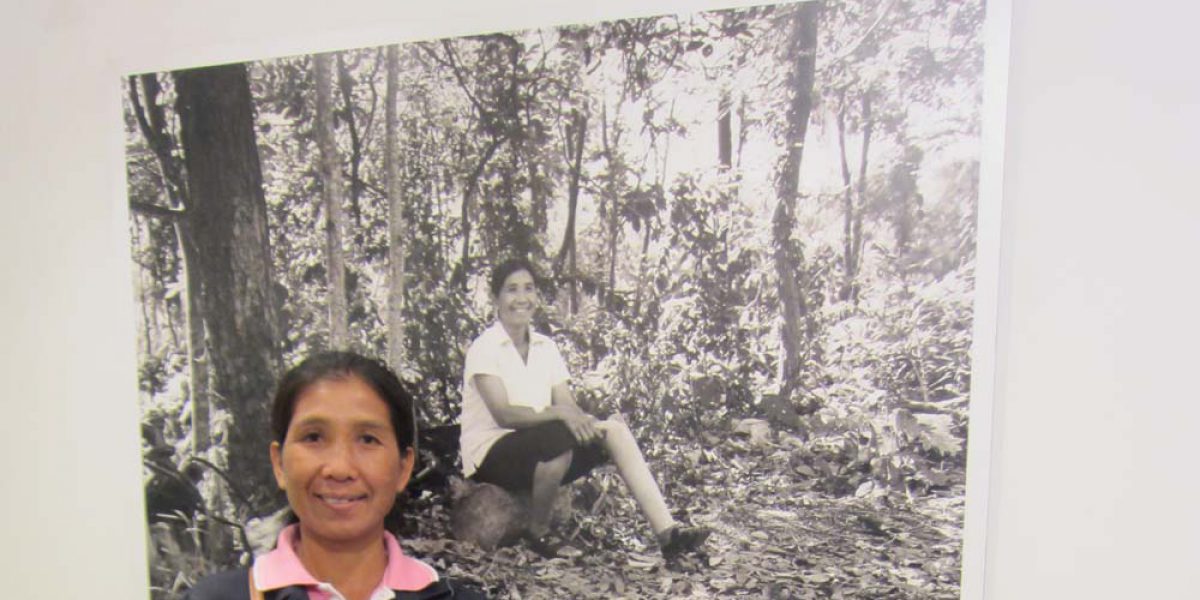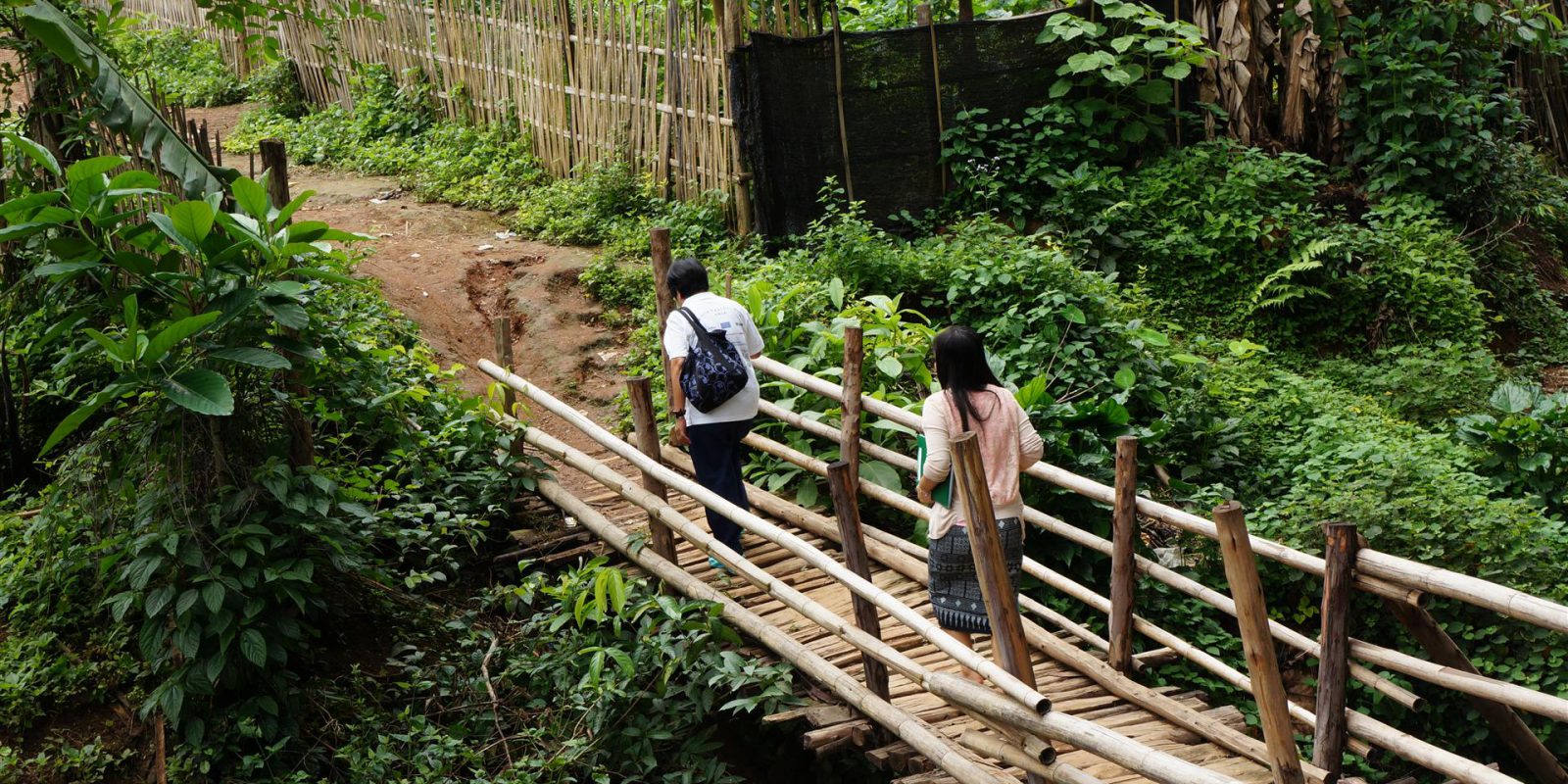Thailand: Landmine survivors photo exhibit unveiled
04 April 2013|Dana MacLean

Bangkok, 4 April 2013 — In celebration of International Landmine Awareness Day in 2013, a photo exhibition spotlighting landmine survivors was unveiled today to the Thai public in downtown Bangkok’s Siam Paragon shopping mall.
“The event shows the brave and inspiring stories of landmine survivors through a moving photo essay,” said Sermsiri Ingavanija, JRS’ Campaigns Coordinator and former head of the JRS landmines campaign in Thailand.
The photo exhibit displays photographs of survivors ten years ago, in 1993, and today, both accompanied with mini-biographies that provide insight into the challenges faced by people who unwittingly stepped on a landmine.
Hosted by the Thai Ministry of Foreign Affairs (MFA) in collaboration with Jesuit Refugee Servoce (JRS), the Catholic Organisation for Emergency Relief and Refugees (COERR), and Norwegian People’s Aid (NPA), the organisers hope to raise awareness on the plight of survivors and celebrate the policy victories for survivors’ access to medical care and assistance.
Thailand, which signed on to the international Mine Ban Treaty in December 1997, provides free surgeries, care, and and prosthetics in hospitals nationwide as of 1994 for survivors of landmine accidents.
Landmine affected populations
The majority of landmine accidents have taken place along the 700 km long Thailand-Cambodian border, with more than 69 communities suffering from mine pollution in that area. Similarly, on the eastern border with Myanmar, landmines affect up to 139 communities, according to the 2012 Landmine and Cluster Munition Monitor.
Most of the populations living near mine-polluted areas are farmers, and an accident can severely affect their ability to earn money to live, according to survivors.
“It was very difficult for me to continue to farm the rice field and grow vegetables after the accident,” said Mrs. Wiboonrat Chanchoo, a 46 year old woman from Sakaeo province, located just 19 km from the Cambodia border.
She stepped on a mine while cutting bamboo with her family when she was 29. “After that I still worked in the fields but very slowly. But I had to keep working in order to support my two daughters and pay for their education,” she explained.
Five hundred baht is given per month as social assistance to persons with disabilities in Thailand. But those without a supplementary income are vulnerable to falling into debt, as the assistance is only enough to pay for two weeks of rice, according to Mrs. Wiboonrat.
“Many survivors, including myself, are in debt,” she said.
One year after her accident, Mrs. Wiboonrat became the leader of Tambon Pan Suek’s, her hometown’s, Committee for Persons with Disabilities, and has travelled to international Cluster Munitions meetings in Geneva in 2000 and 2010, and Nairobi in 2004, as the Thailand representative.
“I hope that in the future there will be greater assistance and acceptance of landmine victims,” she said.
“Caring for survivors all starts with awareness in society,” said Ms. Ingavanija. “We invite all of the public to attend the exhibition and learn from the strength and resilience of the survivors.”
The photo exhibit will be on display from 4- 14 April in the heart of downtown Bangkok’s Siam paragon, on the third floor.



